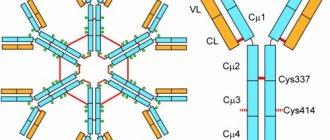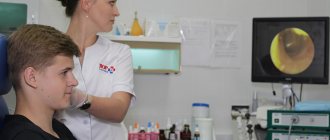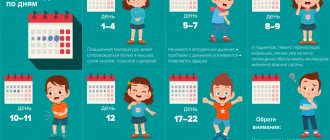1.General information
Kakosmia, literally translated from ancient Greek, means “bad smell”, and this term, despite its certain phonetic originality in Russian pronunciation, is very precise and capacious. This is one of the parosmia known to medicine (the term dysosmia is also used) - disorders of smell or, more precisely, disorders of the perception and interpretation of odors by the brain.
A person suffering from cacosmia perceives odors with significant distortions. In situations where persons with a normal sense of smell perceive only a weak or moderate odor, qualifying it as neutral, tolerable, pleasant, etc., a person with cacosmia can experience much more intense and emotionally rich olfactory sensations, moreover, extremely unpleasant ones, surprising those around him an appropriate facial and behavioral reaction (a grimace of disgust, pinched nostrils with fingers, a request to ventilate the room, etc.).
The mechanisms of development and course of cacosmia have been poorly studied; Currently, this issue remains controversial. The actual frequency of occurrence of this phenomenon in the general population is also unknown, although cacosmia is traditionally considered a rare or very rare phenomenon.
A must read! Help with treatment and hospitalization!
How to help yourself?
While treatment is ongoing - both for ENT pathologies and neurological problems, if we are really talking about parosmia - you can help yourself so as not to suffocate. “You need to rinse the nasal cavity with saline solutions, of course, not pour them too much, so that it gets deep into the nasal cavity and into the ears. By the way, if in this case some “green stuff” is blown out, then this is another plus in favor of the theory of ENT problems, and not parosmia. You can also use nasal antiseptics, corticosteroid hormonal sprays (naturally, only as prescribed by a doctor) and drugs to improve tissue trophism and restore the nutritional function of the mucous membrane,” says Vladimir Zaitsev.
There are contraindications, you should consult your doctor
2. Reasons
A significant portion of sources describe cacosmia as an illusion, but many authors attribute the phenomenon exclusively to olfactory hallucinations (the difference between an illusion and a hallucination is that in the first case a real-life object or stimulus is distortedly perceived - for example, a smell - and in the second it is realistically perceived something non-existent). In the literature, there is also a division of cacosmia, very close to the indicated interpretations, into objective (when the existing smell is incorrectly identified) and subjective (the smell is felt in the absence of a source).
Objective cacosmia often occurs during purulent-inflammatory processes in the maxillofacial structures, oral cavity, nasopharynx and paranasal sinuses, organs of the respiratory system, and gastrointestinal tract; at the same time, those around him may not feel any smell even close by, while the patient himself perceives the “stench coming from within” as if with multiple intensification.
Subjective cacosmia is observed in many organic (i.e., occurring with pathological changes at the tissue level) brain lesions, traumatic brain injuries, epilepsy, endogenous psychoses, and malignant tumors.
In this case, there is a constant or, more often, paroxysmal pathological irritation of the olfactory cortical centers of the telencephalon and/or associated brain structures.
It should, however, be repeated that the mechanisms of formation of cacosmic sensations, whether illusory or hallucinatory, have not been sufficiently studied and require further multidisciplinary research.
Visit our Otolaryngology (ENT) page
Impaired sense of smell after Covid
One of the markers of Covid is a violation of the sense of smell (smell perception)
It is well known that COVID-19 often impairs the sense of smell. For example, in a study conducted in Iran, 59 of 60 patients hospitalized with COVID-19 had an impaired sense of smell based on psychophysical olfactory testing. Olfactory dysfunction (OD), defined as a reduced or distorted ability to smell while smelling (orthonasal olfaction) or eating (retronasal olfaction), is often noted in mild or even asymptomatic cases of covid. In a study conducted in Italy, 64% of 202 patients with mild Covid symptoms reported a loss of smell. The possibility that OD may act as a marker of disease, particularly among people with minimal or asymptomatic symptoms, has led otolaryngology organizations to recommend including loss of smell and/or taste as part of the diagnostic criteria for the onset of COVID-19 disease. These organizations suggest that new-onset OD is sufficient to justify self-isolation and use of personal protective equipment by healthcare personnel.
Young women are more likely to lose their sense of smell with Covid
Reports of loss of smell associated with COVID-19 describe a sudden loss of smell that may occur in the presence or absence of other symptoms of coronavirus infection. Among hospitalized patients with COVID-19 in Italy, smell/taste disturbance was observed more often in younger patients and in women. Unpublished data and anecdotal reports support resolution of olfactory symptoms within approximately 2 weeks of Covil infection. However, it is unknown what proportion of patients develop permanent post-infectious loss of smell OD.
Loss of taste or smell?
Many patients report deterioration of smell and taste interchangeably. Although it is possible that SARS-CoV-2 affects both the olfactory and gustatory systems, most cases of dysfunction are not associated with COVID-19. When patients describe a change in taste, the symptom may be related to a retronasal olfactory (flavor) disturbance rather than a taste disturbance (sweet, salty, sour, bitter). For this reason, it is believed that the disruption of chemosensory function in COVID-19 is likely to be olfactory.
Why loss of smell?
Coronaviruses are one of many pathogens known to cause a post-infectious variant of loss of smell, likely because nasal epithelial cells exhibit relatively high expression of the angiotensin-converting enzyme receptor 2, which is essential for SARS-CoV-2 entry. Disruption of olfactory neuroepithelial cells can lead to inflammatory changes that impair olfactory receptor neuron function, cause subsequent damage to the olfactory receptor neuron, and/or impair subsequent neurogenesis. Such changes may cause temporary or more long-lasting OD. Studies in transgenic animal models have shown intracranial entry of SARS-CoV through the olfactory bulb. This has led to speculation that SARS-CoV-2 may enter intracranial routes with possible subsequent effects on the olfactory and non-olfactory regions of the brain, which may adversely affect olfactory function.
Identifying and assessing the severity of loss of smell
During the current pandemic, patients with new-onset acute smell and/or taste dysfunction, with or without other COVID-19 symptoms, should undergo a period of self-isolation and, if possible, testing for SARS-CoV-2. In patients with symptoms requiring emergency hospitalization (eg, respiratory distress), chemosensory assessment of smell and taste should only be considered if the patient's clinical condition allows it. Subjective self-assessment of chemosensory function should not be relied upon to make a diagnosis due to limited correlation with more objective measures. However, remote use of validated tools (eg, visual analogue scales, ordinal scales, patient-reported outcome measures) may allow safe and timely collection of data from these self-isolating patients. However, such results should be interpreted with caution; this approach is appropriate for some patients with COVID-19 for whom psychophysical testing is not possible. The psychophysical assessment involves the presentation of odors/flavors, with the test result dependent on the patient's response. Such tests are more reliable than subjective assessment alone and should be performed in patients with COVID-19 whenever possible.
Psychophysical assessment of loss of smell
Olfactory psychophysical assessment instruments most often test a combination of odor threshold (the minimum strength of an odor that can be perceived), odor discrimination (discrimination between different odors), and odor identification (identification of odors). Ideally, instruments should be used to determine odor threshold, recognition, and identification using a standard multi-component olfactory testing device. However, when rapid assessment or self-administration is needed, such as when assessing patients with COVID-19, commercially available instruments with fewer testing components, self-administration devices, or both may be considered.
Because most patients reporting taste changes are likely to experience retronasal olfaction impairment, screening for taste function should be sufficient as a first-line assessment. Patients found to be abnormal on screening should undergo full testing using a standardized taste assessment instrument.
Visualization of the paranasal sinuses
Imaging of the paranasal sinuses and brain may be considered to exclude sinonasal or intracranial abnormalities (including malignancies), as well as to determine the morphology of the olfactory bulb and sulcus, which carry diagnostic and prognostic information for OD. The utility of imaging in COVID-19 has not yet been established and should only be used in patients with persistent OD.
How do we restore our sense of smell after Covid?
When COVID-19-related illness resolves spontaneously, special treatment for loss of smell may not be required. However, if the disorder persists for more than 2 weeks, we believe that it is appropriate to consider treatment.
Why do we restore our sense of smell after Covid?
Let us note that treatment aimed at post-infectious loss can potentially be useful for the treatment of Covid, since, in my opinion, it partly prevents the occurrence of neurological and mental disorders after Covid.
Olfactory training
Olfactory training involves repeated and targeted inhalation of specific, carefully selected odors for 20 seconds, at least twice a day, for at least 3 months (or longer if possible). In my observation, the improvement in the sense of smell in patients with post-infectious loss of smell is well documented after olfactory training. Olfactory training may be considered for patients with persistent OD associated with COVID-19, because this therapy has a low cost and minor side effects (the cost of one session of olfactory training in our clinic is 500 rubles, a course of active treatment is 10 procedures)
Nasal electrophoresis with neuropeptides
Almost from the very beginning of the pandemic, we have been conducting nasal electrophoresis with neuropetides in our clinic (Mental Health LLC), both in the inpatient and outpatient centers. I believe that this is especially important in children, since this method of treatment prevents brain damage from covid. I would like to note that, according to my observation, for Covid suffered in childhood, delayed (after 2-3 months) neurological and, especially, mental disorders are typical, in particular, anxiety-depressive spectrum disorders and cognitive impairments (memory, attention and thinking).
Should I use corticosteroids?
We use oral and intranasal corticosteroids (usually dexamethosone, from 4 to 10 days) in some cases to eliminate the inflammatory component in patients with post-infectious loss of odor. However, we have not used corticosteroids much recently because our research suggests that they should not be recommended for people with post-infectious OD because there is no evidence of benefit and there is a potential risk of harm. For safety reasons, we also do not recommend the use of systemic corticosteroids for the routine management of acute COVID-19. In the absence of obvious inflammatory disease seen on endoscopy or imaging, initiation of corticosteroid treatment is unlikely to benefit post-COVID-19 OD, as is the case for other causes of post-infectious OD. However, patients who were taking intranasal steroids before developing COVID-19 (eg, allergic rhinitis) should continue taking these medications.
Other Treatments for Smell Loss
Other medications that have shown promise for post-infectious odor loss include intranasal sodium, which is thought to modulate olfactory receptor transduction cascades, intranasal administration of certain vitamins (primarily E and A), which may promote olfactory neurogenesis, and systemic omega-3s, which may act through neuroregenerative or anti-inflammatory agents. The last 2 drugs can be used as adjuvant therapy for olfactory training.
3. Symptoms and diagnosis
By definition, cacosmia is manifested by intense and realistic sensations of putrefactive, corpse-like, hydrogen sulfide, or generally unclassifiable, but in any case disgusting odor. As stated above, paroxysmal cacosmia is much more common than permanent cacosmia. If the phenomenon is caused by progressive pathology of the brain or is accompanied by degeneration of conducting neurons, cacosmia can, at varying speeds, transform into total anosmia, i.e. to complete loss of olfactory functions.
The examination is prescribed depending on which cause seems most likely. In any case, a detailed medical history is collected, a thorough examination of the ENT organs is performed, olfactometry (measurement of olfactory sensitivity), sniffin'-test and other tests are performed. It is often necessary to involve specialized specialists in the diagnostic and treatment process - psychiatrist, neurologist, oncologist, etc. - who prescribe diagnostic procedures specific to their disciplines.
About our clinic Chistye Prudy metro station Medintercom page!
Phantom smells
During COVID-19, some patients lose their ability to taste and smell. This phenomenon is medically called anosmia. After recovery, the sense of smell is gradually restored. But for some people, this is replaced by a distortion of smells - parosmia. They feel something that is not really there, the president of the British Association of Otolaryngologists, Professor Nirmal Kumar, explained to SkyNews.
This oddity, Kumar did not rule out, may occur because the virus disrupts the functioning of the nervous system - the part that is responsible for the sense of smell and affects neurotransmitters in the nose that send signals to the brain. Most often, this is observed among young people and doctors, although it also occurs among representatives of other professions. Phantom odors are usually unpleasant - almost any food and drink smells like fish, hydrogen sulfide or burning sulfur, burning, or garbage. For some, the aroma of coffee was replaced by the smell of gasoline, beer, or a sickening sweet smell. Some patients have been living with this distortion for six months.
“Just today I saw two patients with parosmia. One of them smells fish instead of all other smells, and the other smells burning in the absence of smoke sources. Both are healthcare workers,” the professor explained.
4.Treatment
Obviously, there is no need to talk about treating cacosmia as an independent disease. Therapy, if possible at all, is always aimed at eliminating the underlying pathology, i.e. diagnosed causes of this perceptual disorder, since cacosmia in almost all cases is part of a much larger symptom complex. It is necessary, however, to note that in some cases, distortions of olfactory sensitivity may be one of the first, and sometimes the only prodromal sign of the beginning of a dangerous process, so you should consult a doctor immediately upon the appearance of this symptom.
The danger of parosmia
Parosmia, as well as anosmia, is dangerous primarily due to poisoning: it is easy to miss the moment when a product or dish has spoiled and eat something that is not fresh. You may not feel or confuse the smell of burning wiring, gas and other odors that signal danger. In addition to signals about the surrounding world, smells have a very strong influence on the cerebral cortex and can spoil the memory of some good event from the past.
“In response to the smell, a chain of neurons is built that recreates the memory of some event. The chain is built anew each time. You are sure that the event happened like this, and you just remember it like that. But the chains may line up differently, and the trigger will be the perception of a new smell,” Leskov added.
According to Italian scientists, the otolaryngologist noted, after COVID-19, receptor function is restored on average within 80 days. Their German colleagues are talking about 60 days for coronavirus injuries and 100 days for any injuries. But distortions due to improper functioning of the cerebral cortex can last as long as desired. Even your whole life, if you let everything take its course. Therefore, it would be useful to consult a psychologist to exclude the depressive component of parosmia.











